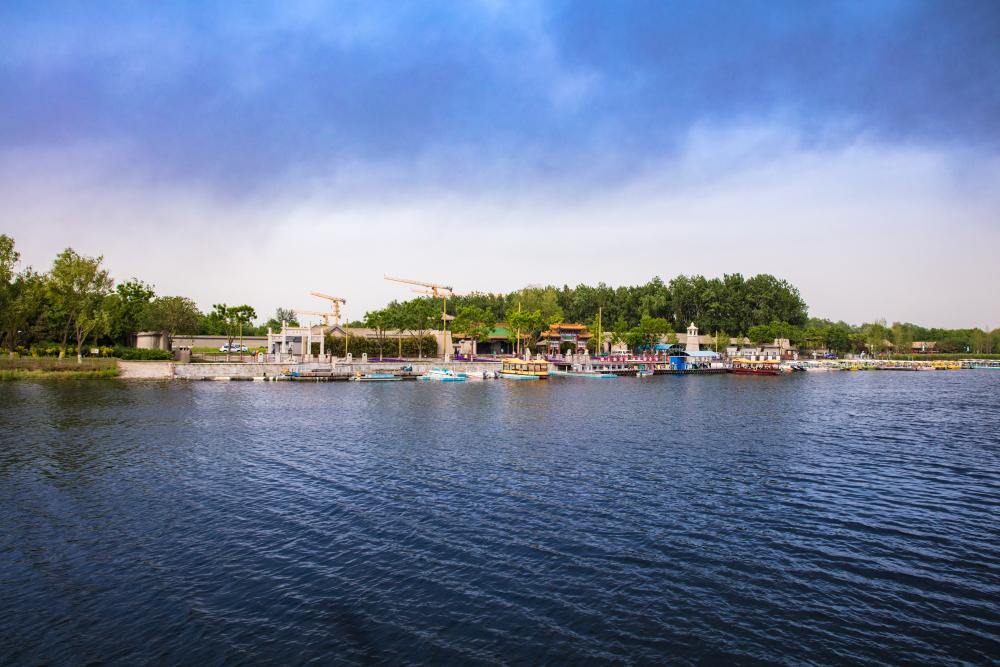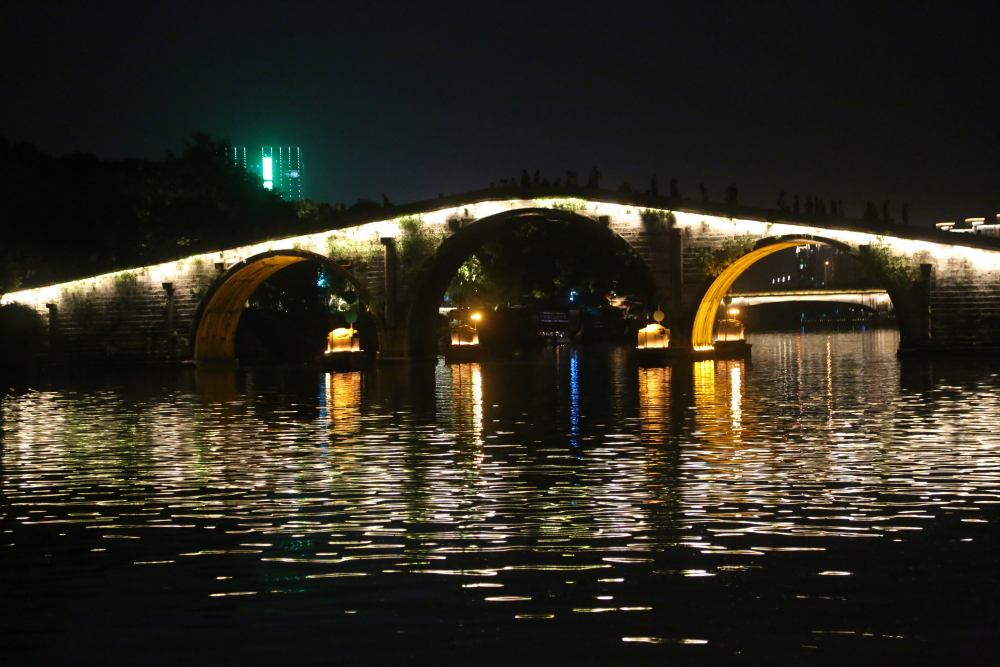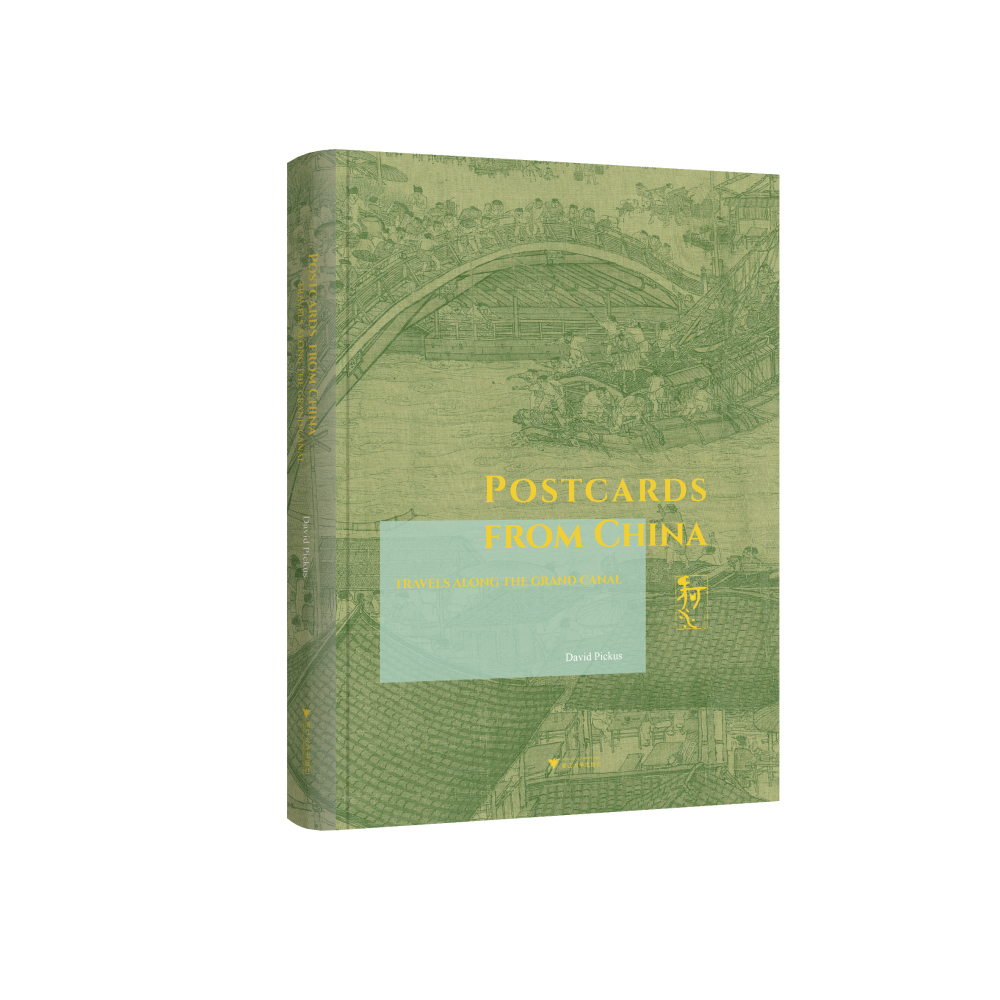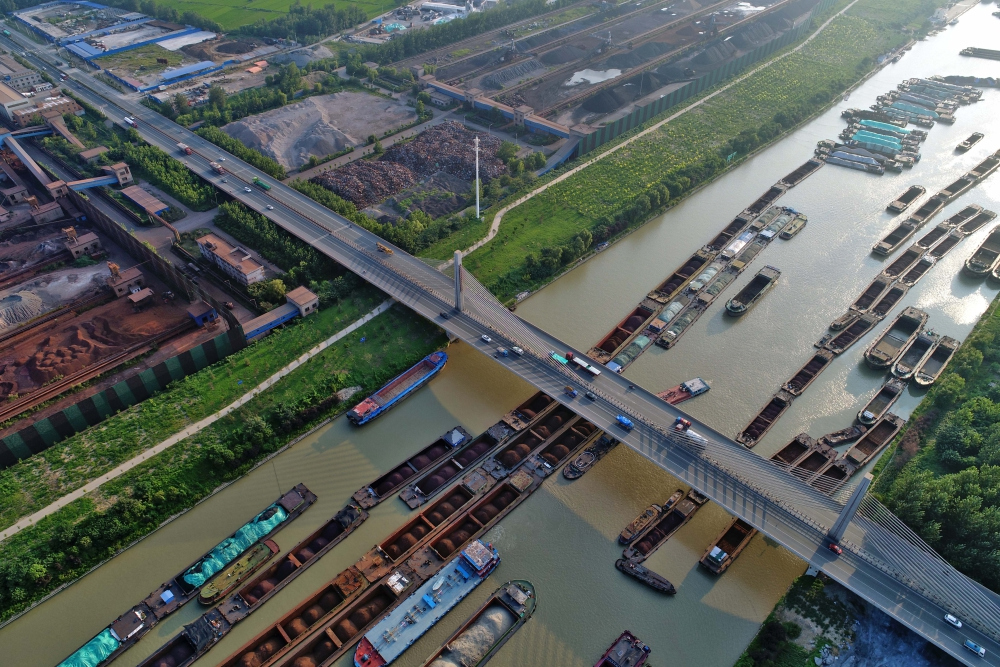中国的河流,自西而东奔流。
大自然以不可违拗的塑造展示了它的强硬,但在历史的行进中,需要粮食与文明,需要南北贯通。于是,中国有了一条大运河,从古代一直流淌到现代。
在美国人大卫·皮卡斯(David Pickus)眼里,京杭大运河不仅仅是一条河。
海河、黄河、淮河、长江、钱塘江,当中国的五大水系自山脉中的涓涓细流汇聚成奔腾之势时,也意味着它们将奔向各自的远方。但是,一条大运河将五大水系联结了起来。历代中国人,以团结之力,实现了河流的“互通”,一条条看似不怎么相干的河,由此成为一个系统,一个联系体。而运河两岸,新的故事不断因水而生。

正是如此,大卫看到了大运河更高层面的象征意义,他试图借一条大运河,展现整个中国在全球化背景下的快速变化和发展。2018年底,大卫写的“运河之书”——《来自中国的明信片:大运河纪行》(Postcards from China: Travels along the Grand Canal),由浙江大学出版社出版。
一
大卫知道,中国的大运河是中国古代南北交通的大动脉,是一处超大规模的线性文化遗产,她促进了古代经济文化发展和社会进步,对中国的统一和完整、对中华民族的发展具有不可替代的重要作用,而运河文化也是中华文化的重要组成部分。另一方面,外国朋友对于大运河的重要性却不甚了了。
通过对大运河(以及其沿岸特色城市、城镇)的考察、对与大运河息息相关的相关人物的访谈,大卫向读者讲述了大运河的历史变迁、介绍路经的这些地方的历史、文化、艺术、人情风俗,并试图将整个叙事置于中国政治、经济以及文化和历史的大背景之下,分析大运河的实际以及象征意义,与此同时,大卫也着重讲述了自己的沿途见闻,并借此给读者展示了整个中国在全球化背景下的快速变化和发展。
在大卫看来,大运河之于昨日的中国,就是全球化之于今日的中国,而当今大运河区域的发展,象征着这种新旧结合的力量。也正如大运河有时会泛滥、淤积,导致无法通航;而当下,我们必须努力保持全球化的活力,互惠互利,保持和谐,阻滞也会随之瓦解。
大卫来自美国,他是美国芝加哥大学的历史学博士,曾任教于中国人民大学、美国亚利桑那州立大学等,目前在浙江大学任教。
2004年,大卫来到中国。那时他像所有出游异国的人一样,忐忑于在他乡的吃住行和人际交流。不过,他最终爱上了这里的文化。
2007年,一趟杭州之行,让大卫与大运河结下了缘分。运河上的船与桥,沿岸游客的聚集点和百姓生活的社区,都让他产生了宾至如归的感觉。他决定全身心投入到对大运河的研究当中。
2016年底,大卫干脆把生活全部移到了杭州。
2018年底,他写作的《来自中国的明信片:大运河纪行》,由浙江大学出版社出版。
即使跳出学术研究的范畴,大卫也比绝大多数中国人更熟悉这条大运河。
他从北京一路向南,洛阳、无锡、扬州、苏州、杭州、绍兴、宁波……他不但走进了运河沿岸的重要枢纽城市,还旁及更为广阔的地域,进入大运河沿岸居民生活的细枝末节。

比如,他来到绍兴,参观鲁迅故居,还从叫卖的商贩手中买了柄印有鲁迅头像的扇子,摇进水乡的寻常巷陌。
鲁迅的“遗产”与绍兴、大运河有什么关系?大卫有自己的答案。
他觉得,当人们在绍兴“穿越”到鲁迅的少年,那个处于清朝尾声里的旧时代,少年鲁迅在三味书屋读书,在百草园游玩,一切看似保持着原有的井然有序,但末世的清朝已经形成了难以自我疏通的堵塞,正如当时的运河。
从封闭的院落中,鲁迅突围而出,找到迈向未来的方式和洞察人间的烛火。这个行为不单单影响着他个人、那个时代,而且还影响着现在和未来。因此,当大卫走访绍兴当地的纺织工业时,脑海中萦绕的依然是鲁迅。互联网与自动化为纺织业创造了新的机会,也提出了更高的要求。当更多的制造、交易不再依赖于人力与实体空间,地方实业的变化,正在验证着“鲁迅式”的打破与重建。
让过往不再是一副束缚前行的镣铐,这是鲁迅留下的经验,也是一直流淌于运河之中的人文精神。
二
杭州西溪路上的晨昏,是大卫日常生活的一部分。
在《来自中国的明信片:大运河纪行》中,他写到了这条路。
在中国的风水文化中,路也是河,路上的车水马龙,营造着河一般的流动感。这条西溪路,让大卫对大运河有了另外的思考。
从大卫在西溪路上的公寓楼走出来,可以看到两种截然不同的生机勃勃——左转,是中国大城市的普遍景观:钢结构带玻璃幕墙的高大建筑、五星级酒店、现代银行以及密布的星巴克;右转,则是另一片人间烟火:水果、蔬菜、农产品,各种摊位、人流,热闹喧嚣。
这截然不同的街景,仅仅隔着两分钟的步行距离。而城市由过去迈向现代,也在倏忽之间。身居西溪路的大卫,亲身体验着这一点。
如果把大运河作为观察的主体,西溪路是它的组成部分,而且大运河边有无数的“西溪路”,每条街道都有自己的新旧交接,如何在旧的基础上建立新的秩序?正是西溪路的细节,促动大卫去思考大运河在当下时代中应处的位置。
在《来自中国的明信片:大运河纪行》的每一章,大卫都会写到这样的话题:一些事物的破败带来了新事物,而一些先前建造的东西开始瓦解,又会带来更新颖的东西。正如鲁迅冲破了封建时代的旧家园,也正如现代纺织正在淘汰过剩的产能。
因此,大卫眼中的运河之美,并非只有垂柳夕阳的诗意,舟船与沿岸,居民的用具与居所的参差,也蕴含了生活之美。而时代的变化,有时大动干戈,有时就隐藏在这样的日常中。
三
在大卫看来,大运河不是静态的,而应该被看作是一种不断发展的、动态的行动。
“它就像一个句子中的动词,并且也不是‘建造’或‘增长’或‘航行’这样一个个的单一行动。而是一种反反复复、连绵不断的行动,是‘建造、建造、再建造’、‘增长、增长、再增长’。”甚至,跳出地理位置的框定——“大运河可以说没有一个起点,也没有一个终点。相反,我们可以把它看作是由一系列的开始和一系列的结束杂糅而成的。”
早在2018年12月7日,杭州举行的“大运河论坛”上,大卫已经把自己的观点传递给来自世界各地的大运河研究专家。
他说,自己开始撰写大运河的故事时,就把它看作是一个具有普遍意义的故事——一个人类世界通过不断努力,将各种事物、人群团结在一起并将文明延续的故事。它不断提醒人们,互联互通所能赢得的巨大动能。
关于中国的故事,大卫依然在写。目前,他正着手写一本有关中国创造力的书,“这本书将充分展示当今中国创造性和创造力的爆炸”。
Grand Canal in the Eye of America Author
On December 7, 2018, Zhejiang University Press launched Postcards from China: Travel along the Grand Canal, a book written by David Pickus, an American teaching at Zhejiang University in Hangzhou. A PhD of history, Pickus first came to China in 2004. In 2007, he visited Hangzhou and found the canal fascinating. He decided to write a book on the world’s longest and oldest artificial river. In 2016, he moved to Hangzhou to be as close to the canal as possible.

The book is based on his tours along the great manmade watercourse all the way from Beijing at the northern end to Hangzhou, which used to be the southern end of the canal. He has visited all the key cities along the Grand Canal. He has even traveled across the Qiantang River and followed another section of the canal network that links Ningbo and Shaoxing in eastern Zhejiang to the Grand Canal. It is not wrong to say that David Pickus knows more about the Grand Canal than do some Chinese.
However, what makes Pickus’ book on the Grand Canal stand out is not the facts and history he puts in the book but his interpretation of the manmade river.
“There is no one single beginning point of the Grand Canal in time and space. The Grand Canal embodies a series of beginnings and endings. The Grand Canal is by no means static. It is an action that keeps taking place. It can be likened to a verb playing a key role in a long sentence,” notes Pickus. “It is a river that has brought China together. It connected the major rivers of China and integrated China into a system. The canal has given rise to unprecedented possibilities and made things happen.”
Pickus now lives in an apartment building on Westbrook Road and this road is a part of his book. He thinks the road is a demarcation line which shows two different sides of China. When he steps out of the apartment building and turns left, he sees a fancy cityscape: a wide boulevard of steel and glass buildings, with five-star hotels, several bank branches, two Starbucks within 200 meters of each other. “This is a cityscape that is becoming the norm in the prosperous parts of all of China’s large cities,” comments Pickus. If he turns right and takes a two-minute walk, he comes to the everyday part of life: fruit and vegetable stands and shops, shrimp, fish and meat stalls, repair shops, convenience stores. In this part of the city he can buy almost everything he needs in everyday life. In his eye, the past and the present juxtapose in the same road. And he thinks Westbrook Road is a representative component of the Grand Canal and concludes that there must be a great number of such roads that radiate from the canal. In his eyes, every single road is a connection of the past and the present. The details revealed in Westbrook Road enables Pickus to contemplate the role the Grand Canal plays in the contemporary times. The beauty of the Grand Canal does not lie in the poetry of the willows swaying slightly at the sunset moment. The boats and the shores, and residential houses, household utensils also reflect the beauty of everyday life engendered and defined and carried on by the canal. The changes that define an era, sometimes, must be seen in great tumults, but sometimes, such changes are hidden in conventions of everyday life.

Pickus shared his view with experts from all over the world at a forum on the Grand Canal held in Hangzhou on December 7, 2018. He said that, when he started writing about the Grand Canal of China, he considered writing a story of universal significance: a story about humans who worked together and brought all things together and carried on civilization. In his understanding, the Grand Canal keeps reminding people of the importance of interconnecting with each other for survival and future growth. The American scholar believes that the Grand Canal of China signifies a lot in the times of this highly globalized world.
David Pickus is preparing to write a book about China’s booming creativity.

(Executive Editor: Liu LIU)